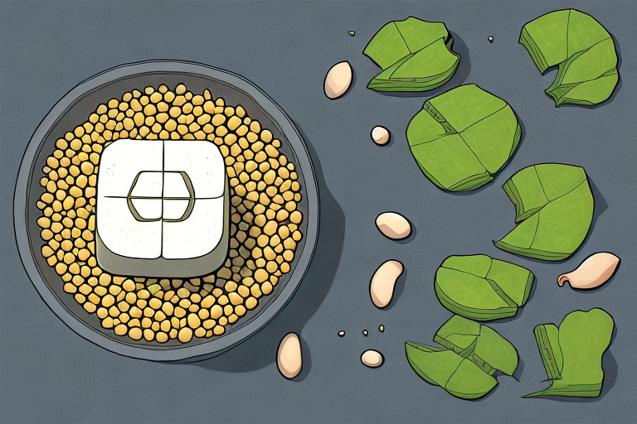
Discover how to maintain a healthy, plant-based diet while sailing and explore the best sources of protein to keep you energized on your adventurous journey.
Sailing and Plant-Based Diets: How to Get Enough Protein
As you embark on your sailing adventure with your family, one of the most important aspects to consider is maintaining a healthy and balanced diet. Nutrition plays a crucial role in ensuring that you have the energy and stamina to navigate the open seas, and it’s especially important when you’re living an active lifestyle on a boat.
For those who choose to follow a plant-based diet, one of the most common concerns is getting enough protein. In this article, we’ll explore the importance of protein in your diet, the best plant-based sources of protein, and how to plan your meals to ensure you’re meeting your protein needs while sailing.
The Importance of Protein
Protein is an essential nutrient that plays a vital role in many bodily functions. It’s necessary for building and repairing tissues, making enzymes and hormones, and maintaining healthy bones, muscles, and skin. When you’re living an active lifestyle on a boat, getting enough protein is especially important to support muscle growth and repair, as well as to maintain overall health and well-being.
While it’s true that animal-based foods are often high in protein, there are plenty of plant-based sources that can provide the necessary amount of protein for a healthy diet. In fact, many plant-based foods are not only rich in protein but also contain essential vitamins, minerals, and fiber that can help support overall health and well-being.
Plant-Based Protein Sources
There are a variety of plant-based foods that are rich in protein, making it easy to meet your protein needs without relying on animal products. Some of the best plant-based protein sources include:
-
Legumes: Beans, lentils, and chickpeas are all excellent sources of protein, with around 15 grams of protein per cooked cup. They’re also high in fiber, which can help support digestion and keep you feeling full and satisfied.
-
Tofu and tempeh: These soy-based products are both high in protein, with tofu containing around 10 grams per 3.5 ounces and tempeh containing around 19 grams per 3.5 ounces. They’re also versatile and can be used in a variety of dishes, making them a great addition to your sailing meal plan.
-
Seitan: Made from wheat gluten, seitan is a high-protein meat substitute that contains around 25 grams of protein per 3.5 ounces. It’s a great option for those looking for a meaty texture in their plant-based meals.
-
Nuts and seeds: Almonds, peanuts, sunflower seeds, and pumpkin seeds are all high in protein, with around 7-9 grams per ounce. They’re also a great source of healthy fats, which can help support heart health and provide a source of long-lasting energy.
-
Whole grains: Quinoa, bulgur, and barley are all high in protein, with around 8-10 grams per cooked cup. They’re also a great source of complex carbohydrates, which can help provide sustained energy throughout the day.
-
Vegetables: While not as high in protein as some of the other sources listed, vegetables like broccoli, spinach, and kale still contain a decent amount of protein, with around 2-4 grams per cooked cup. Plus, they’re packed with essential vitamins and minerals that can help support overall health.
Meal Planning for Protein
When planning your meals for your sailing adventure, it’s important to ensure that you’re including a variety of plant-based protein sources to meet your daily needs. Here are some tips for incorporating protein into your meal plan:
-
Start with a protein-rich base: When planning your meals, start by choosing a protein-rich base like legumes, tofu, tempeh, or seitan. This will help ensure that you’re getting enough protein in each meal.
-
Include a variety of protein sources: To ensure you’re getting a balanced mix of essential amino acids, it’s important to include a variety of protein sources in your diet. Aim to include at least 2-3 different protein sources in your daily meal plan.
-
Don’t forget about snacks: Snacks can be a great way to boost your protein intake throughout the day. Opt for protein-rich options like nuts, seeds, or roasted chickpeas to help keep you feeling full and satisfied between meals.
-
Plan for protein at breakfast: Breakfast is often a meal where protein can be overlooked, especially on a plant-based diet. Be sure to include protein-rich options like whole grain cereals, nut butter on toast, or a tofu scramble to start your day off right.
-
Make use of protein powders: If you’re struggling to meet your protein needs through whole foods alone, consider incorporating a plant-based protein powder into your diet. These can be easily added to smoothies, oatmeal, or even used in baking to help boost your protein intake.
Sample Meal Plan
To give you an idea of what a protein-rich plant-based meal plan might look like while sailing, here’s a sample day of meals:
Breakfast: Tofu scramble with spinach, tomatoes, and avocado, served with whole grain toast
Lunch: Quinoa and black bean salad with mixed greens, bell peppers, and a lemon-tahini dressing
Dinner: Lentil and vegetable curry served over brown rice
Snacks: Almonds, fresh fruit, and roasted chickpeas
By incorporating a variety of plant-based protein sources into your meals and snacks, you can ensure that you’re getting enough protein to support your active sailing lifestyle. With a little planning and creativity, it’s easy to maintain a healthy and balanced plant-based diet while exploring the open seas with your family.